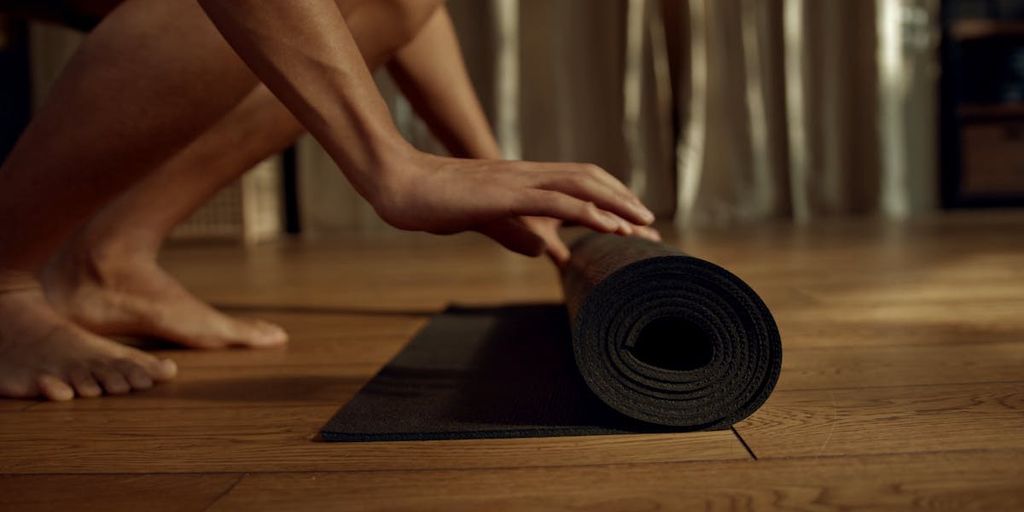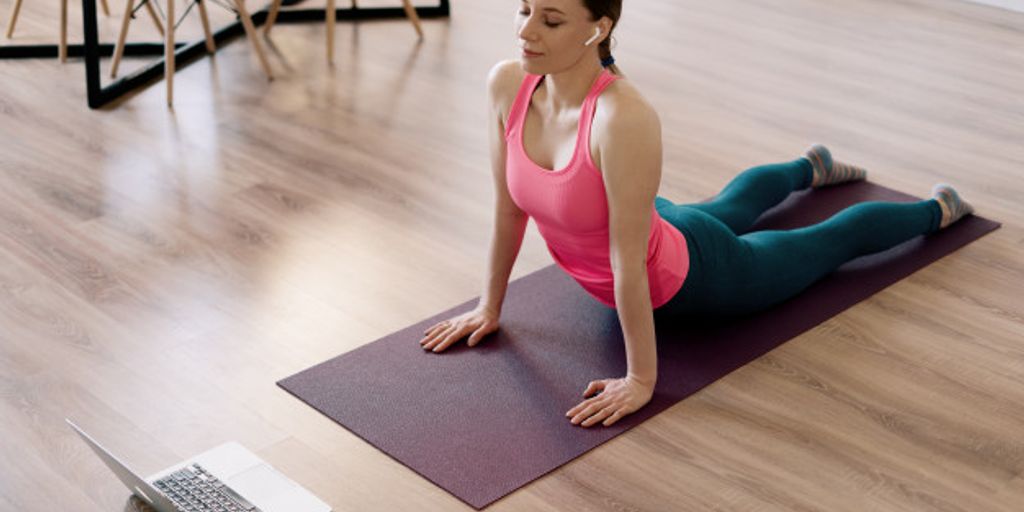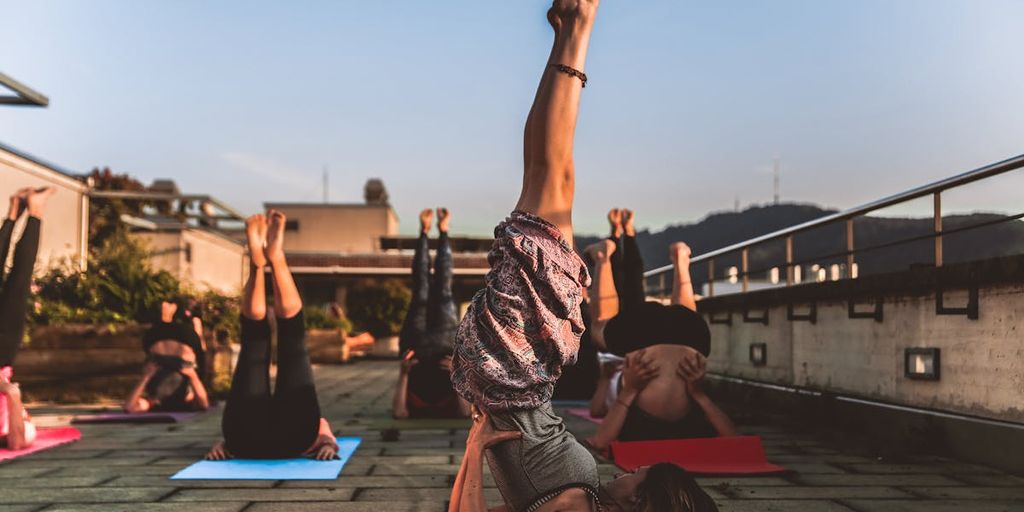
Choosing the Best Yoga Mat Material for Your Practice
Choosing the right yoga mat material is crucial for enhancing your practice and ensuring comfort, support, and safety. With a variety of materials available, it's essential to understand the benefits and drawbacks of each to make an informed decision. This article will guide you through the different types of yoga mat materials, their benefits, durability, comfort, cost considerations, allergy concerns, and environmental impact.
Key Takeaways
- Understanding the different yoga mat materials, including natural rubber, PVC, and TPE, is essential to find the right fit for your practice.
- Eco-friendly yoga mat materials offer benefits such as sustainability, non-toxicity, and biodegradability.
- Durability factors such as wear and tear, longevity, and maintenance vary across different yoga mat materials.
- Comfort and support in yoga mats depend on cushioning, grip, and thickness, which are crucial for a good practice experience.
- Considering cost, allergy concerns, and environmental impact can help you choose the best yoga mat material for your needs.
Understanding Different Yoga Mat Materials
Choosing the right yoga mat material is crucial for enhancing your practice. Each material offers unique benefits and drawbacks, making it essential to understand the differences. Below, we explore three popular yoga mat materials to help you make an informed decision.
Natural Rubber
Natural rubber mats are known for their excellent grip and eco-friendliness. They are made from renewable resources and provide a non-slip surface, which is ideal for various yoga practices. However, they can be heavier and may have a distinct smell initially.
PVC
PVC (Polyvinyl Chloride) mats are widely available and often more affordable. They offer good durability and cushioning but are not the most environmentally friendly option. PVC mats can release harmful chemicals during production and disposal, making them less ideal for eco-conscious yogis.
TPE
Thermoplastic Elastomer (TPE) mats are a newer option that combines the benefits of both natural and synthetic materials. They are lightweight, recyclable, and provide good cushioning and grip. TPE mats are also free from harmful chemicals, making them a safer choice for both you and the environment.
When choosing a yoga mat, consider your priorities, whether it's grip, eco-friendliness, or cost. Understanding the different materials can help you find the perfect mat for your practice.
Benefits of Eco-Friendly Yoga Mat Materials
Sustainability
Eco-friendly yoga mats are crafted from sustainable materials like natural rubber, cork, or recycled materials. These mats are designed to have a minimal environmental impact, ensuring that your practice is not only good for you but also for the planet.
Non-Toxicity
One of the significant benefits of eco-friendly yoga mats is that they are non-toxic. Unlike traditional mats that may contain harmful chemicals, these mats are free from PVC, phthalates, and other toxic substances. This makes them safer for both you and the environment.
Biodegradability
Eco-friendly yoga mats are often biodegradable, meaning they will break down naturally over time. This reduces the long-term waste associated with yoga mats and helps in maintaining a cleaner planet.
Choosing an eco-friendly yoga mat is a step towards a more sustainable and health-conscious lifestyle.
Comparing Durability of Various Yoga Mat Materials
Wear and Tear
Yoga mats are subject to significant wear and tear, especially with regular use. Natural rubber mats tend to show signs of wear more quickly than synthetic options. However, they often provide better grip and comfort. PVC mats, on the other hand, are known for their durability and can withstand rigorous use without deteriorating quickly. TPE mats strike a balance between durability and eco-friendliness, making them a popular choice for many practitioners.
Longevity
When it comes to longevity, PVC mats often outlast other materials due to their robust nature. Natural rubber mats, while eco-friendly, may not last as long, especially if used frequently. TPE mats offer a middle ground, providing decent longevity while being more environmentally conscious than PVC. It's important to consider how often you practice and the intensity of your sessions when choosing a mat for its longevity.
Maintenance
Proper maintenance can significantly extend the life of your yoga mat. Natural rubber mats require regular cleaning and should be kept out of direct sunlight to prevent degradation. PVC mats are relatively low-maintenance and can be easily cleaned with a damp cloth. TPE mats, while more durable than natural rubber, still need regular care to maintain their integrity. Following the manufacturer's care instructions is crucial for all types of mats to ensure they last as long as possible.
Choosing the right yoga mat material involves balancing durability, comfort, and environmental impact. Consider your practice style and how often you use your mat to make an informed decision.
Comfort and Support: Key Factors in Yoga Mat Materials
When selecting a yoga mat, comfort and support are paramount. The right mat can significantly enhance your practice by providing the necessary cushioning and grip.
Cushioning
Cushioning is essential for protecting your joints during practice. Mats with adequate cushioning can help prevent injuries and provide a more comfortable experience. Consider material, thickness, cushioning, grip, and traction for an enhanced yoga experience.
Grip
A good grip is crucial to prevent slipping, especially during more dynamic poses. Mats made from natural rubber or TPE often offer superior grip compared to PVC mats. This ensures stability and confidence in your movements.
Thickness
The thickness of a yoga mat can affect both comfort and balance. Thicker mats provide more cushioning but may compromise stability, while thinner mats offer better balance but less comfort. It's important to find a balance that suits your practice style.
Choosing the right yoga mat involves balancing comfort, support, and personal preference. Take the time to explore different materials and thicknesses to find the perfect match for your needs.
Cost Considerations for Yoga Mat Materials
Budget Options
For those new to yoga or on a tight budget, there are several affordable yoga mat options available. PVC mats are often the most cost-effective, but they may not offer the same level of comfort or durability as other materials. TPE mats are another budget-friendly option that provides a balance between cost and performance.
Mid-Range Choices
If you're willing to invest a bit more, mid-range yoga mats offer better quality and durability. Natural rubber mats fall into this category and are known for their excellent grip and cushioning. These mats are a great choice for those who practice yoga regularly and need a mat that can withstand frequent use.
Premium Mats
For the ultimate yoga experience, premium mats made from high-quality materials like natural rubber or eco-friendly composites are the way to go. These mats often come with additional features such as extra thickness, superior grip, and enhanced durability. While they come at a higher price point, the investment is worth it for serious practitioners.
When choosing a yoga mat, consider your budget and how often you practice. Investing in a higher-quality mat can enhance your practice and provide better support and comfort over time.
Allergy Concerns with Yoga Mat Materials
When choosing a yoga mat, it's crucial to consider potential allergy concerns, especially if you have sensitivities to certain materials. Exposure to PVC and phthalates through inhalation and skin contact can result in adverse reactions for some individuals.
Latex Allergies
Natural rubber mats are popular for their eco-friendliness, but they can pose a problem for those with latex allergies. If you have a latex allergy, it's best to avoid these mats to prevent any allergic reactions.
Synthetic Material Sensitivities
Some people may experience sensitivities to synthetic materials like PVC and TPE. These materials can sometimes cause skin irritation or other allergic responses. It's important to test a small area of the mat before committing to regular use.
Hypoallergenic Options
For those with allergies, hypoallergenic yoga mats are a great choice. These mats are designed to minimize the risk of allergic reactions and are often made from materials that are less likely to cause irritation.
When selecting a yoga mat, always consider your personal health and any potential allergies to ensure a safe and comfortable practice.
Environmental Impact of Yoga Mat Materials
Production Process
The production process of yoga mats can significantly affect the environment. Conventional yoga mats often contain materials that are harmful to the environment, whereas eco-friendly mats use sustainable resources. Choosing mats made from natural materials like organic cotton or jute can reduce your carbon footprint.
Recyclability
Recyclability is a crucial factor when considering the environmental impact of yoga mats. Mats made from natural rubber or TPE are generally more recyclable compared to those made from PVC. This means they are less likely to end up in landfills, contributing to a more sustainable practice.
Eco-Friendly Brands
Several brands are committed to producing eco-friendly yoga mats. These brands focus on using sustainable materials and ethical production methods. Some popular eco-friendly brands include:
- Manduka
- Jade Yoga
- prAna
Opting for eco-friendly brands not only supports sustainable practices but also encourages the industry to adopt greener methods.
The environmental impact of yoga mat materials is a crucial consideration for eco-conscious practitioners. Many conventional mats are made from PVC, which is not biodegradable and can release harmful chemicals. At Yune Yoga, we offer a range of eco-friendly mats made from natural rubber and other sustainable materials. Make a positive change for the planet and your practice by exploring our eco mats today!
Conclusion
Choosing the best yoga mat material for your practice is a personal journey that depends on various factors including comfort, durability, grip, and environmental impact. Whether you opt for natural rubber, PVC, TPE, or another material, it's important to consider what aligns best with your values and needs. By understanding the pros and cons of each material, you can make an informed decision that enhances your yoga practice and supports your overall well-being.
Frequently Asked Questions
What is the best yoga mat material for beginners?
For beginners, TPE (Thermoplastic Elastomer) is often recommended due to its balance of comfort, grip, and affordability.
Are eco-friendly yoga mats more expensive?
Eco-friendly yoga mats can be more expensive than traditional PVC mats, but they offer benefits such as non-toxicity, sustainability, and biodegradability, which can be worth the investment.
How do I clean my natural rubber yoga mat?
You can clean a natural rubber yoga mat with a mixture of water and mild soap. Avoid using harsh chemicals as they can degrade the material.
Is PVC yoga mat safe for daily use?
While PVC yoga mats are durable and affordable, they can contain harmful chemicals. If you choose a PVC mat, look for one labeled as phthalate-free and latex-free.
What should I consider if I have a latex allergy?
If you have a latex allergy, avoid natural rubber mats and opt for hypoallergenic options like TPE or PVC mats labeled as latex-free.
Can yoga mats be recycled?
Some yoga mats, especially those made from eco-friendly materials like natural rubber or TPE, can be recycled. Check with the manufacturer or local recycling programs for specific guidelines.


